Sat Jan 15, 2022 13 Projections for 2022 (Part 1)
A collection of my own experiments
(see Intro for further explanations)
January: Wagner IX Autobiographical
| Wagner IX Autobiographical | |
|---|---|
| Original Creator | Karlheinz Wagner (1949) |
| Group | Lenticular |
| Property | Compromise |
| Remarks | A variation of the Wagner IX, Böhm notation: 70-81-272-64. |
| My variation | Developed in 2021, presented here for the first time |
When I was preparing the 2022 calendar, it occurred to me that I experimented a lot with Wagner VII/VIII variations, but I didn’t have a single own Wagner IX variant so far. It’s about time to rectify the omission!
Usually, when I experiment with map projection variations, while the finally decision is made by the aesthetics of the projection, I keep a close look at the distribution of distortions.
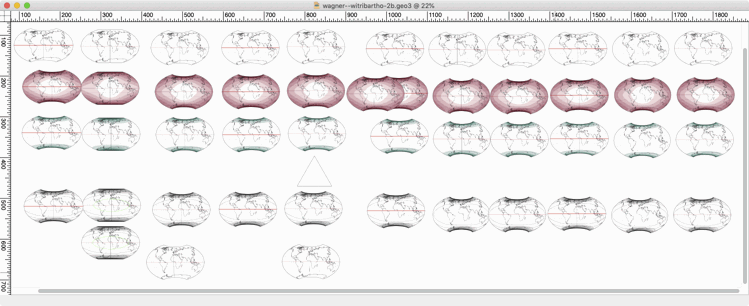
Screenshot from Geocart: Testing various Wagner VII variants to find the one that was later published as BCW A I. The triangle marks the configuration 67-80-60-27-190 which won the competition.
In this case, there was the problem that I can’t create visualizations of distortion for Wagner IX variants. So this time, I had to rely on the aesthetics only. I fired up my interactive example of the Customizable Wagner ESP and started to drag the sliders. Not very much to my surprise I ended up with a configuration that showed some resemblance to Canters W09. And a bit later I realized that it basically corresponds to Wagner IX.i with a stronger curvature of parallels.
And than, I came up with a funny little idea. In Wagner IX variants you got two parameters that set the aspect ratio of the projection (albeit in different ways)[1], which in the Böhm notation are represented in the two last digits. Thus, there are various (and to be accurate, infinite) combinations that all render the same projection (except for the nominal scale). For example, the above mentioned projection Wagner IX.i is represented by the Böhm notation 70-50-200-88, but you get an identical map by using 70-50-176-100, or 70-50-160-110, or 70-50-220-80 etc.
You don’t believe that? – See for yourself, call the WVG-ESP with the configurations
70-50-200-88,
70-50-176-100,
70-50-160-110 and
70-50-220-80.
Note that the scale is set to a different value each time, but otherwise, they are are identical.
So with these two parameters I had some freedom as to the possible values to get my desired projection. And regarding the first two parameters – well, the gauge here was my aesthetic perception only, so I could easily adjust them by one or two units without any loss.
My idea was to use numbers that, in one way or another, are tied to my autobiography.
Thus, I decided on the configuration 70-81-272-64, which refers
to the years 1970, 1981 and 1964, as well as February 27th.
And no, I’m not going to tell you what’s so special about these years and that date. 😈
Just acknowledge that they are special to me, and that I liked the idea to make
it a kind of very personal Wagner IX variant this way.
And a few days later, I was very pleased to learn that my Autobiographical Wagner IX
shows quite decent distortion values, according to both the Goldberg-Gott metric
and the Airy-Kavraiskiy criterion. This was ascertained by Peter Denner,
who once more also created images showing isolines of angular deformations
and areal distortions. 😊
The isolines are given for max. angular deformation of:
10°, 20°, 30°, 40°, 50°, and 60°.
For the areal inflation, shown normalized to the value at the central point of the map,
the lines represent values of:
1.2; 1.5; 2.0; 2.5; 3.0; and 3.5.
So that’s all for now.
Next month, we’re going to meet an old acquaintance. The emphasis is on “old”.
P.S.: Before I forget it – the Autobiographical Wagner IX is also projection image no. 300 on my website! Yay!
References / Footnotes
- ↑ See my blogpost More Umbeziffern for d3-geo-projections for more information on that matter.
My 2022 Map Projection Calendar
To read another part of my 2022 map projection calendar series, select the desired month.

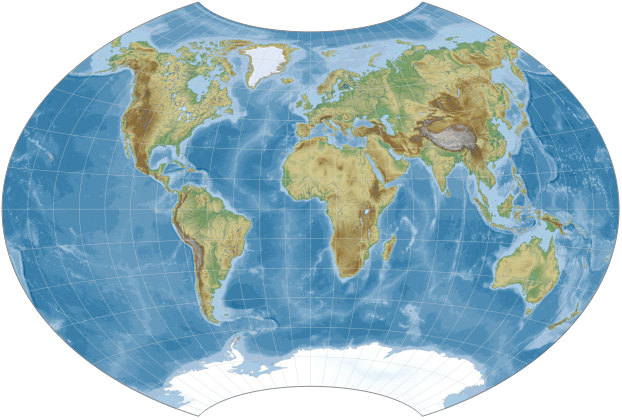
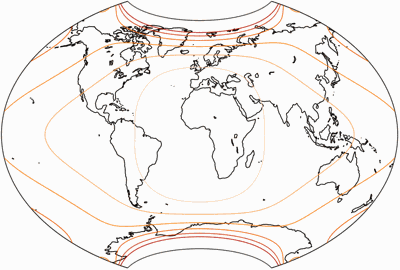
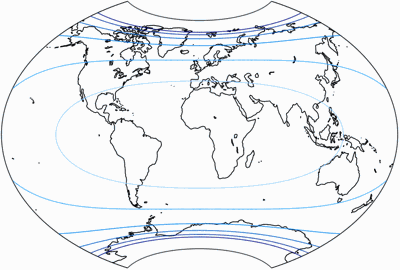








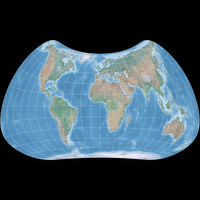



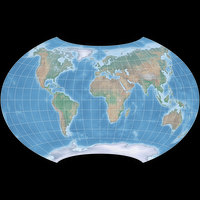
 Except where otherwise noted, images on this site are licensed under
Except where otherwise noted, images on this site are licensed under
Comments
Be the first one to write a comment!